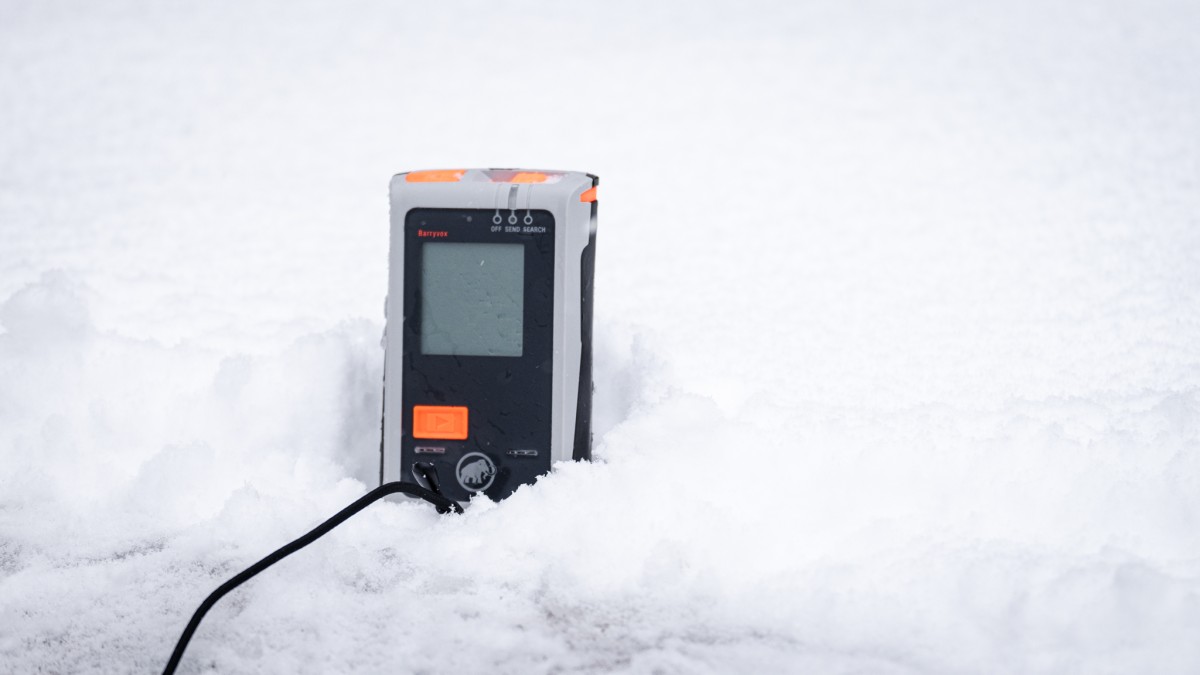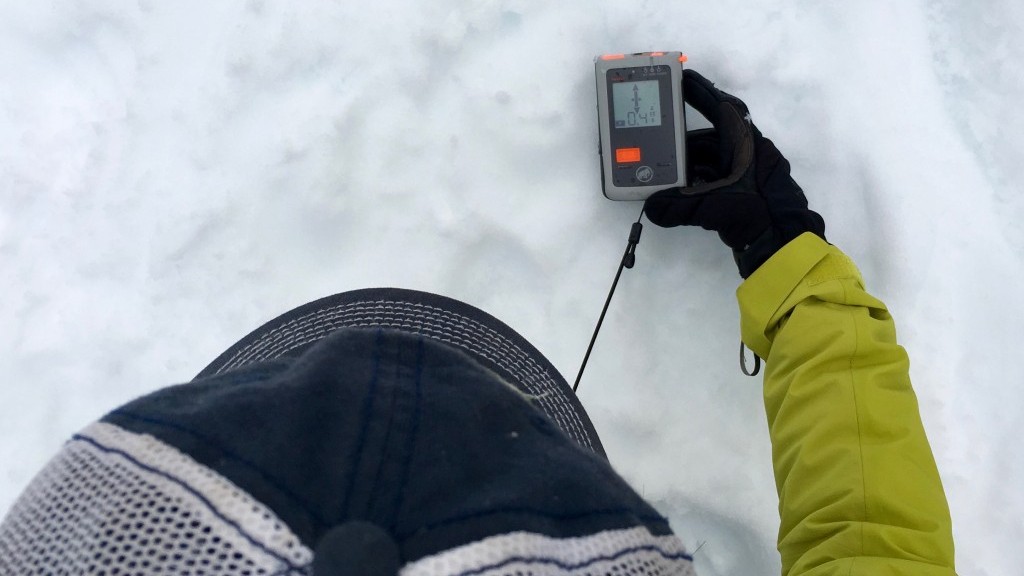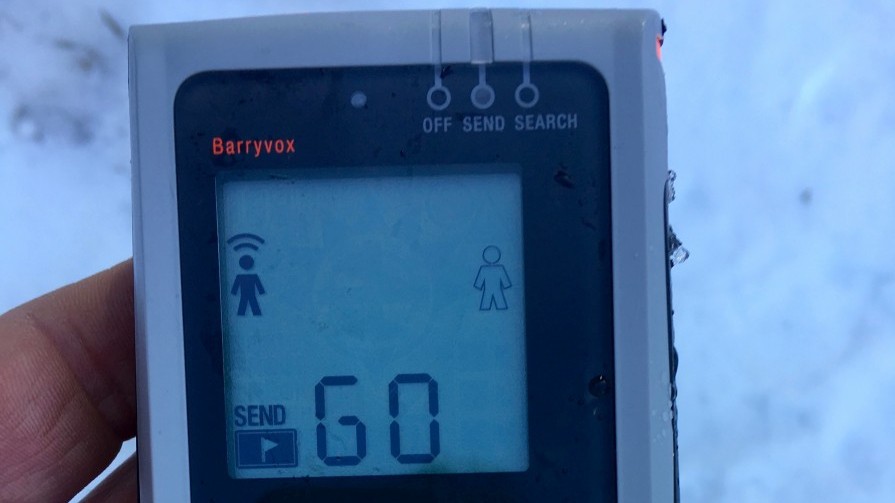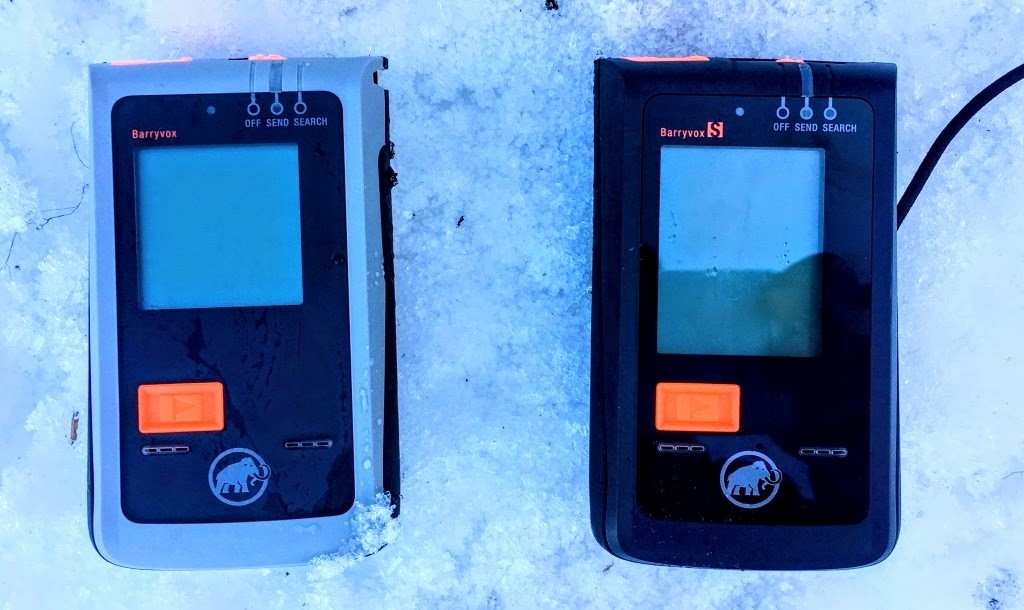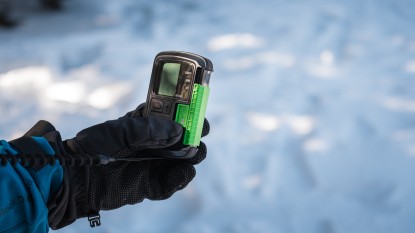Our Verdict
Compare to Similar Products
 This Product
Mammut Barryvox | |||||
|---|---|---|---|---|---|
| Awards | Best Overall Avalanche Beacon | Most Capable Mid-Priced Beacon | Most Efficient Beacon | Best Bang for the Buck | |
| Price | $385 List $299.00 at Amazon | $350 List | $429.95 at Amazon Compare at 3 sellers | $399.95 at REI Compare at 2 sellers | $245.74 at Amazon Compare at 4 sellers |
Overall Score  |
|||||
| Star Rating | |||||
| Bottom Line | Great for both novice or advanced backcountry skiers, this beacon offers top-level capabilities for the most common rescue scenarios | An easy-to-follow display and just the right amount of features make this the perfect option for most backcountry users | An intuitive model that manages to pack in a host of user-friendly features, whose price point will appeal to a wide range of backcountry skiers | BCA honors the 'simplicity is speed' mantra, including only the most sought-after features in this fast and intuitive beacon | With an easy to use interface and a very fast processor, this an ideal option for intro-level backcountry skiers and riders |
| Rating Categories | Mammut Barryvox | Black Diamond Recon X | Arva Neo BT Pro | Backcountry Access... | Backcountry Access... |
| Speed (30%) | |||||
| Interface (25%) | |||||
| Accuracy (20%) | |||||
| Multiple Burials (15%) | |||||
| Range (10%) | |||||
| Specs | Mammut Barryvox | Black Diamond Recon X | Arva Neo BT Pro | Backcountry Access... | Backcountry Access... |
| Manufacturer's Stated Max Range | 70 m | 60 m | 90 m | 55 m | 55 m |
| Measured Range | 55 m | 40 m | 62 m | 42 m | 42 m |
| Flagging Feature | Yes | Yes | Yes | No (Signal Suppression) | No (Signal Suppression) |
| Digital or Analog Modes | Digital | Digital | Both | Digital | Digital |
| Stated Battery Life (in "Send") | 300 hours | 400 hours | Alkaline: 350 hours Lithium: 450 hours |
250 hours | 250 hours |
| Number of Antennae | 3 | 3 | 3 | 3 | 3 |
| Measured Weight | 210 g | 217 g | 214 g | 215 g | 165 g |
Our Analysis and Test Results
The Mammut Barryvox is the updated version of the older Mammut Barryvox Element. After extensive testing, we must say our entire testing team is very pleased with all of the new upgrades over the older Barryvox models. This new version has better multiple burial capabilities, is far quicker in the fine search than its predecessor – which is its most significant improvement – and offers superior range. The new Barryvox platform continues to allow for software updates and includes a self-check function upon startup.
Performance Comparison
Speed
The Barryvox features a solid processor that allows the user to search at appropriate speeds, even if it lags more in the fine search than other beacons in our test. During the coarse search phase, the Barryvox is able to process information essentially at the speed of skiing or walking slowly downhill. It isn't quite as quick to update distance or direction as the fastest beacons in our test, but it is far from slowing you down. During a fine search, however, the delayed-action response of the Barryvox feels like a lag, forcing you to really slow down, especially to perform a proper bracket. While the slower speed was never too much of an issue for finding a low point in adequate time, it was noteworthy.
Interface
The Barryvox interface is classic and easy to work with. The three-way switch is easy to operate, even one-handed, and doesn't require any fiddling to lock it into place. Its few features are right at your fingertips, and it doesn't require an app to access or adjust any settings — in fact, it has no settings to adjust. Even though the Barryvox includes a smaller feature set than comparable models, that's a big reason why it is so easy to use.
Notable Features
This model features a Revert to Send mode. There is an internal motion sensor, and if the beacon does not move for four minutes, it assumes a secondary avalanche may have hit the rescuer, and the device automatically switches back to Send. It is hard not to move during a rescue, and we never had a problem with it inadvertently auto-reverting, but it does include a very loud warning tone just in case you want to abort a revert back to send.
The Barryvox platform is known for having an excellent signal lock, so we recommend using the Group Check mode during trailhead checks. The group check directions are easy to follow, and the display even prompts you with the word “GO” once it picks up a properly transmitting signal. It was surprising how much this improved our efficiency in group checks, and it's little design touches like this that make the Barryvox such a pleasure to use.
Accuracy
Through every search phase, the Barryvox led us right to buried targets without hassle. It locked into an accurate distance reading, even at maximum range, and rarely sent us in the wrong direction during a coarse search. The arrows are smooth to update direction, allowing you to follow a clean arc towards your target. During the fine search phase, we came within 25 cm of a probe strike on a target buried up to one meter deep each and every time. However, we did notice that the brackets in our fine search, on average, were slightly larger using the Barryvox than other beacons we tested. We also consistently observed a wide range of users, from novices to professionals, perform a fine search faster with other models.
Multiple Burials
The flagging function on the Barryvox is essentially identical to other high-to-mid-level beacons we tested. It never had a hard time marking a burial when only two beacons were buried close to one another and rarely had a difficult time with three. It is important to note that, unlike several top models in our lineup, it cannot go back or unmark a flagged beacon. This isn't a big deal in the slightest for most real-world scenarios, but in AMGA or ACMG ski guide exams and other professional-level beacon drills, it can be very helpful. In practice, the only downside to the Barryvox compared to similar models is that your fine search technique needs to be much slower when performing complex rescues.
Range
Mammut claims a maximum effective range of 70 meters and, thus, a search strip width of 70 meters. While range isn't everything, having a larger search strip width allows for a more efficient coarse search as you don't have to zig-zag quite as much. These marketing claims are verified with ideal coupling between beacons, which isn't entirely realistic. To achieve a more real-world measurement, we recorded the distances where a beacon first picked up a beacon and averaged those throughout our testing. The average range we measured for the Barryvox was 55 m, which is still one of the longest maximum ranges – and search strip widths – of any beacon in our review.
Should You Buy The Mammut Barryvox?
The Barryvox is a top-of-the-line beacon for backcountry travelers regardless of their experience. The beacon's easy-to-follow interface makes it a great option for those taking their very first avalanche course, and its highly capable features will serve advanced users for practicing multi-burial problems. Our only caution is that this beacon requires a bit more practice than other competitive entry-level units – if this is your first beacon and you want the absolute easiest-to-use model on the market, you should consider other alternatives. But as a beacon that you can grow with as you develop your skills, there is no better option than the Barryvox.
Barryvox vs. Barryvox S
The Barryvox is essentially the more fundamental version of the fully loaded Barryvox S. The two models share similar search, flagging, and group check functions. It's worth noting that not everyone will benefit from the advanced features of the Barryvox S – while the Barryvox is “simpler,” it will serve the vast majority of backcountry skiers and riders much better than the more advanced Barryvox S.
What Other Avalanche Beacons Should You Consider?
If you like the functionality of the Mammut Barryvoxbut want a beacon with smoother fine searching capabilities, you should consider the award-winning Black Diamond Recon X. If you're shopping on a budget or want one of the absolutely easiest-to-use beacons, check out the Backcountry Access Tracker S. Lastly, if you're an aspiring snow safety professional looking for a beacon to nail an upcoming exam, you may feel limited by the Barryvox feature set – instead, we highly suggest investing in the Mammut Barryvox S.


